Chaotic, vibrant, and full of contrasts, that was my first impression upon arriving in Cairo. A city where the ancient past of the pharaohs coexists with the modern bustle of one of the largest cities in the Arab world. Lively streets, the constant sound of horns, crowded markets, and mosques that mark the rhythm of the day make the Egyptian capital a fascinating place to explore.
But beyond the chaos, Cairo is the gateway to one of history's most impressive civilizations. From the iconic Pyramids of Giza to the treasures housed in its museums, the city offers a unique journey back in time.
In this post, I'll tell you about the top things to do in Cairo and also share some personal reflections on my time in the Egyptian capital. You can read and learn a lot before traveling, but in the end, it's the sensations, sounds, smells, and energy of the place that ultimately define whether or not there was a real connection with this unique city.
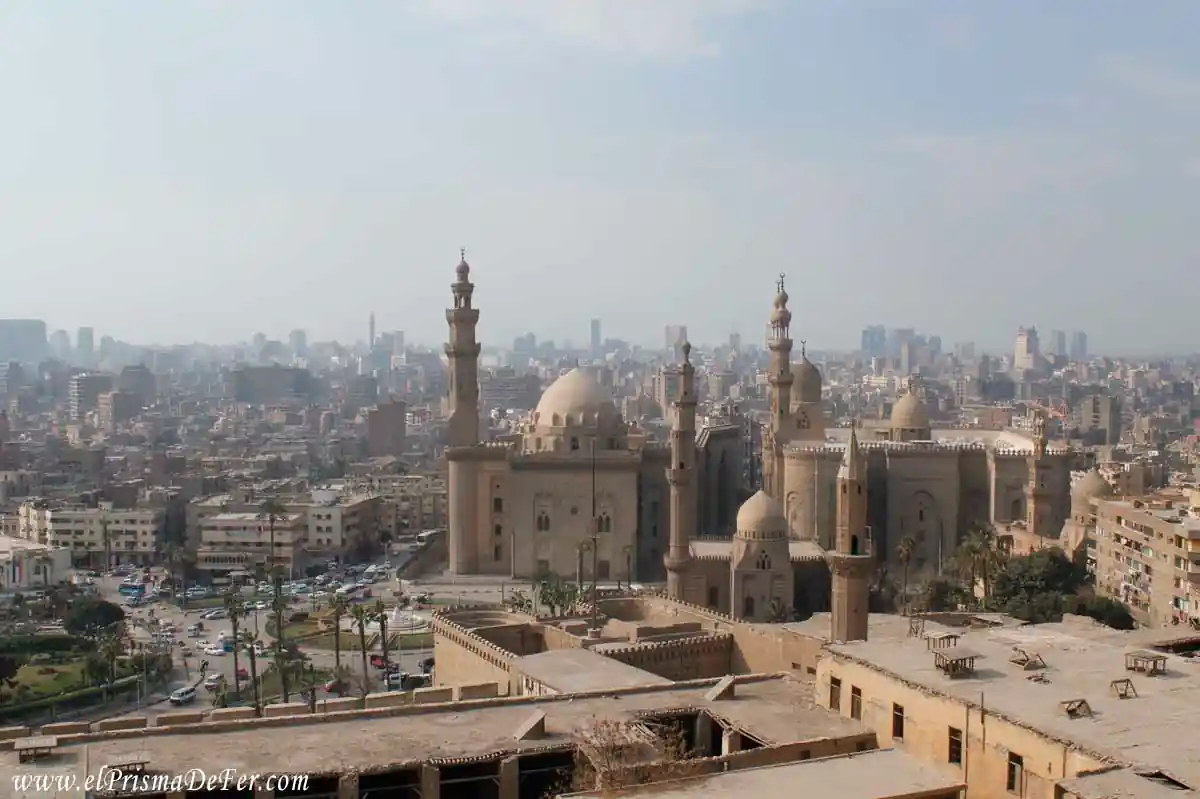

Table of Contents
History of Cairo
Cairo is not only the capital of Egypt, but also a city with centuries of history behind it. Although the country's most famous monuments, such as the Pyramids of Giza, predate and date back to Ancient Egypt, the city itself was born much later. Its origins date back to 969 AD, when the Fatimids founded the city they called Al-Qahirah, "the Victorious," from which the present-day "Cairo" is derived.
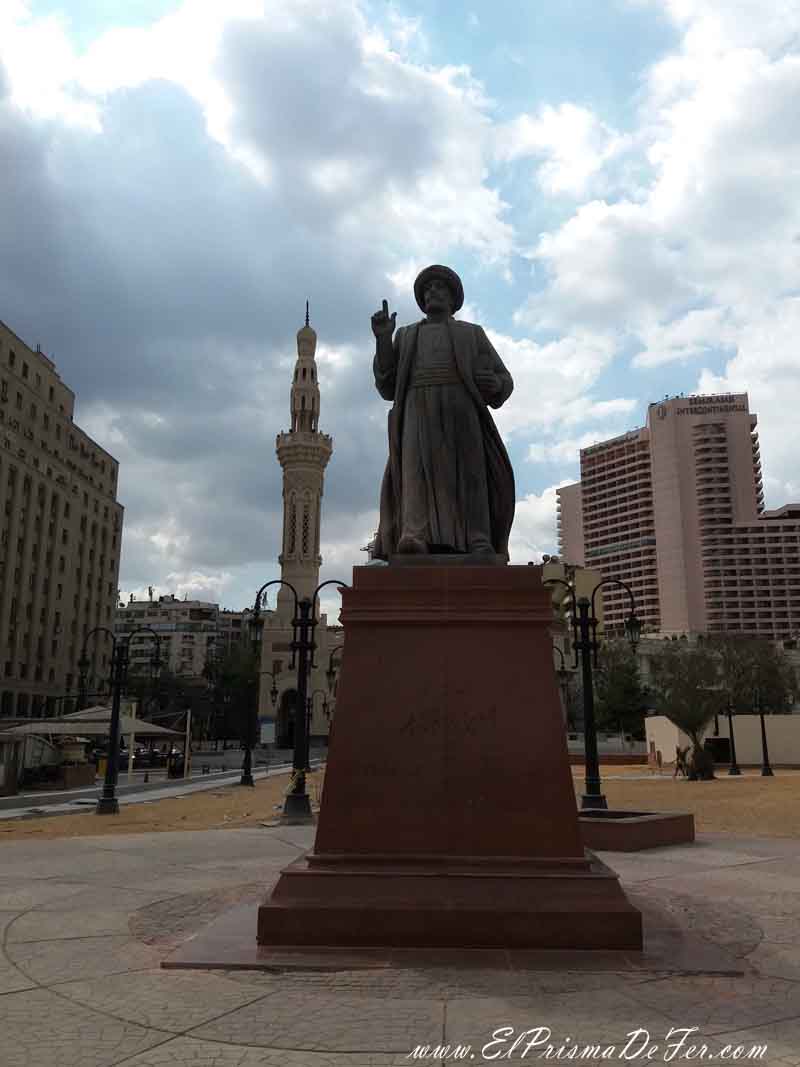
Over the centuries, Cairo became a cultural, religious, and political center of great importance in the Arab world. It was the capital of various Islamic dynasties, such as the Fatimids, Ayyubids, and Mamluks, who left behind an impressive architectural legacy in the form of mosques, madrasas, and historic markets. During the Ottoman era, it continued to grow, and with the arrival of the British in the 19th century, it underwent a transformation into the modern city we see today.
Today, Cairo's cityscape combines the remains of all those eras: from the pyramids and temples of Pharaonic Egypt on the outskirts, to the medieval alleyways of the Islamic city, to the modern buildings that reflect its role as a contemporary capital.
Cairo, the “city of chaos”
Cairo has earned the nickname "the city of chaos" for the intensity with which everything seems to happen at once. Traffic is one of its main protagonists: thousands of cars, buses, and motorcycles circulate without any clear order, horns blare constantly, and crossing a street can become an adventure. Added to this are the streets crowded with vendors, improvised markets, and the unstoppable energy of more than 20 million inhabitants who set a dizzying pace.
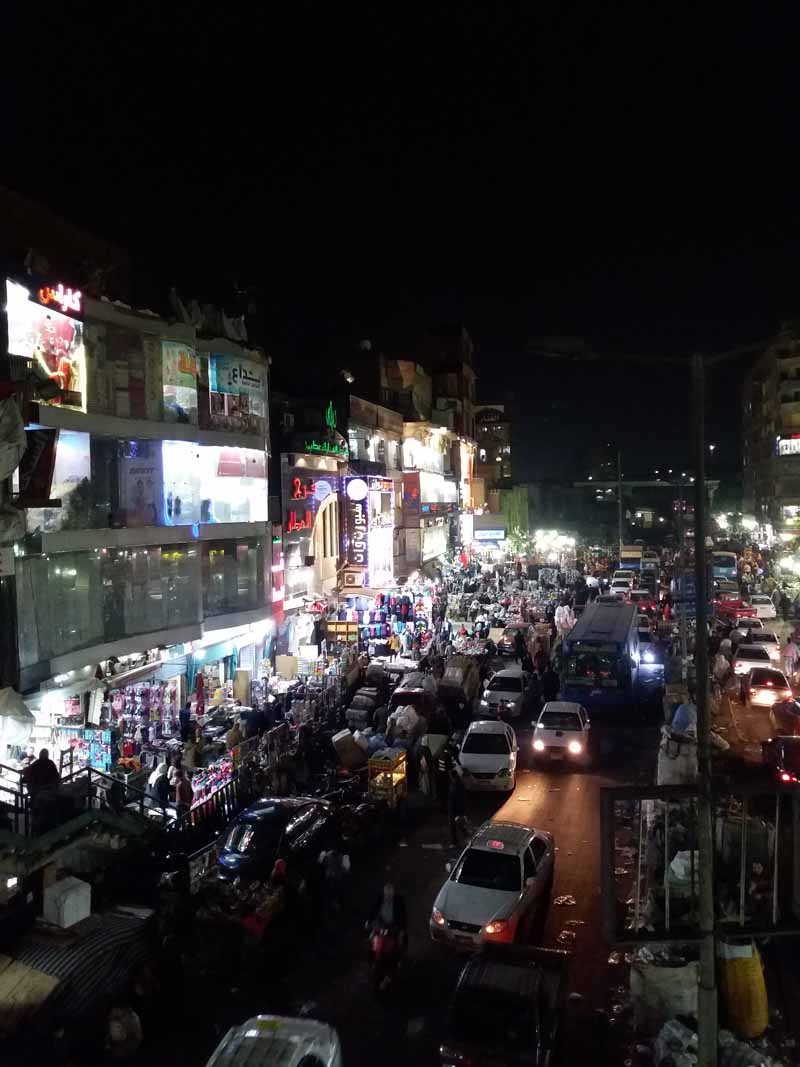
Many tourists tend to avoid spending too many days in Cairo precisely because of this overwhelming feeling. The heat, pollution, noise, and pressure from some vendors make the experience less than comfortable for those seeking a more relaxing trip.
However, behind this chaos lies the city's true charm: an authentic, intense, and contrasting place that challenges travelers while simultaneously offering a deep immersion in Egyptian life.
How to get from Cairo Airport to the Center
To get from Cairo International Airport (CAI) to the city center, you have several options depending on your budget, comfort, available time, and arrival time:
Official taxi or Uber/Careem
- White taxis: These are equipped with meters, but it's a good idea to confirm that they're activated before starting your trip.
- Uber and Careem: Reliable and popular ride-hailing apps in Cairo. You can request them upon arrival and pay in cash or by card.
- Estimated time: Between 30 and 60 minutes, depending on traffic.
- Approximate cost: Between 150 and 250 EGP (around 5 to 8 USD).
Public buses and BRT
- Internal Airport Shuttle: Connects the terminals with the airport bus station.
- From there: You can take public buses to key points such as Tahrir Square or the Abdel-Moniem Riad bus station.
- BRT (Bus Rapid Transit): A modern electric bus system that connects the airport to Adly Mansour Station, from where you can access other transportation lines.
- Cost: Very cheap (less than $1 USD), but may be less convenient if you have a lot of luggage.
Metro (line 3)
- Currently, the metro does not go directly to the airport.
- The nearest station is Adly Mansour, accessible by BRT or taxi.
- From there, you can connect to other metro lines to reach the city center.
How was our arrival at Cairo airport?
We arrived at Cairo Airport on a flight from Malta, and it was 2:30 AM when we landed. An unusual time to start a trip. With so little traffic at that hour, we went through the entry procedures in a matter of minutes. If you don't have a visa yet, you can get one right there for about $25 (euros are also accepted).
Please note: Some countries require visas to be obtained in advance; it's best to check with your country for specific details.
Right next to the visa window is a 24-hour currency exchange office. Although it's useful for quick fixes, it's recommended to exchange only what you need, as the rate is considerably less favorable than in the city.
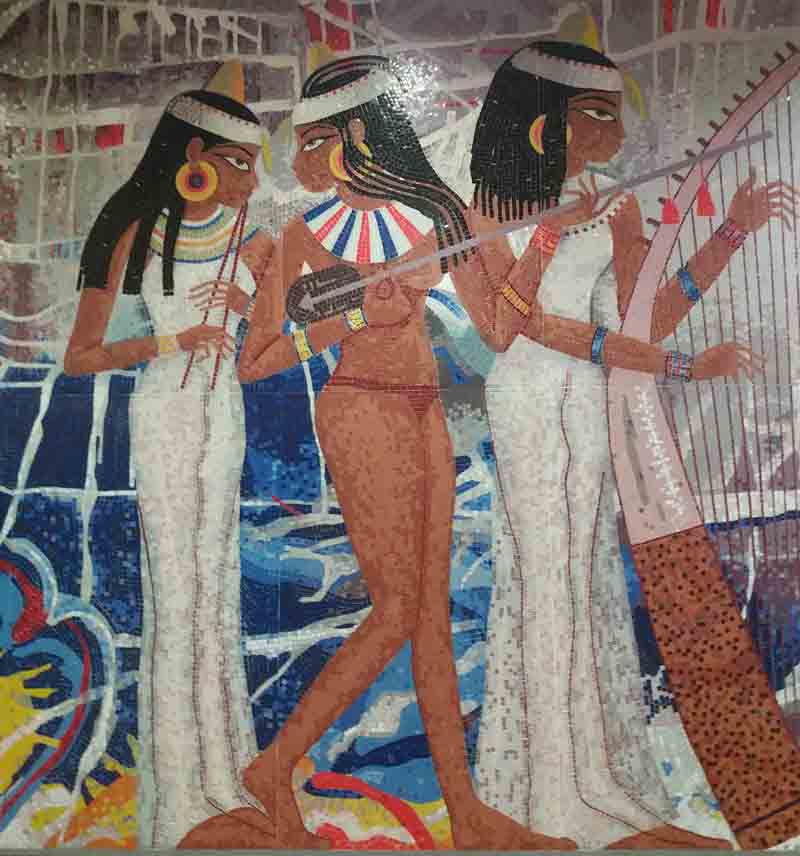
The siege of taxi drivers at the airport
As soon as we set foot in the arrivals hall, we felt for the first time that characteristic harassment that would accompany us throughout our trip to Egypt. In this case, it was the taxi drivers who insisted on taking us to the hotel. No matter how friendly they seem, it's best to avoid taking a taxi with them. Some even offer to call your accommodation or "help" you with anything, but they expect a mandatory tip afterward, and from what I've read, they tend to do so quite insistently.
Luckily, we had already booked a transfer with our accommodation; we just had to find the driver holding a sign with our names on it. The problem was that when we arrived, the man wasn't there. With no Wi-Fi, no local chip, and surrounded by taxi drivers who kept approaching us to convince us that our driver wouldn't show up, those minutes dragged on.
Finally, just after 3 a.m., our driver appeared. With gestures, since he didn't speak English, he explained that he was running late, and we got in the car.
The positive thing about arriving at that hour was the traffic: practically nonexistent. The driver flew at 120 km/h on empty highways, without working seatbelts (welcome to Egypt), and in less than 40 minutes we were in front of our hotel in the heart of Cairo.
If you want to be on the safe side, you can book a private transfer with Civitatis, who will arrange to take you from the airport to your hotel.
How to get around Cairo
Cairo is a large, chaotic, and densely populated city. Nearly 20 million people live in its metropolitan area, making it the eleventh most populous city in the world.
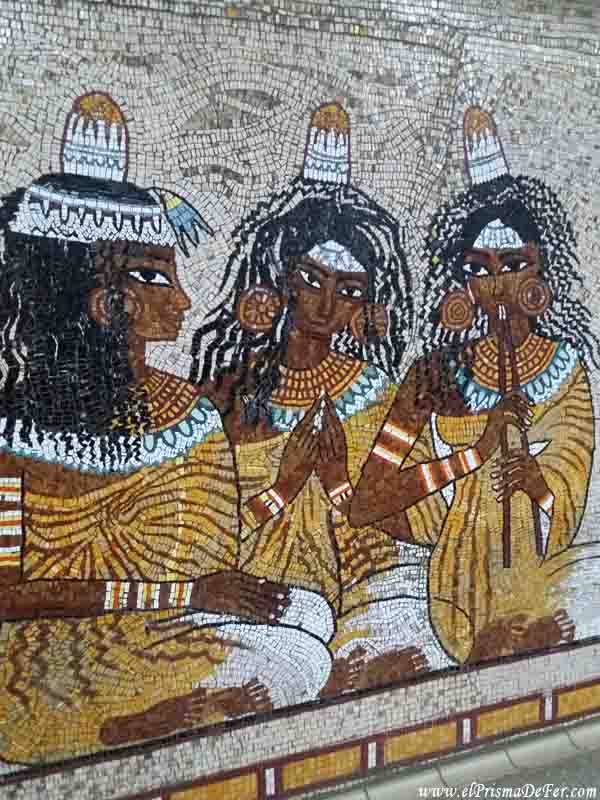
Metro and Uber
For getting around, the most advisable thing, based on time and convenience, was to use the subway and Uber. We preferred to use Uber so we wouldn't have to negotiate the price with each taxi driver and avoid being taken to friendly businesses to buy groceries.
We took several and had no problems with any of them. The only thing worth mentioning is that they generally don't speak English, and if you have to coordinate a pickup point through the app, it can sometimes be a bit complicated. But with Google Translate, you can reach a good understanding, although it sometimes translates anything (as in the image below).
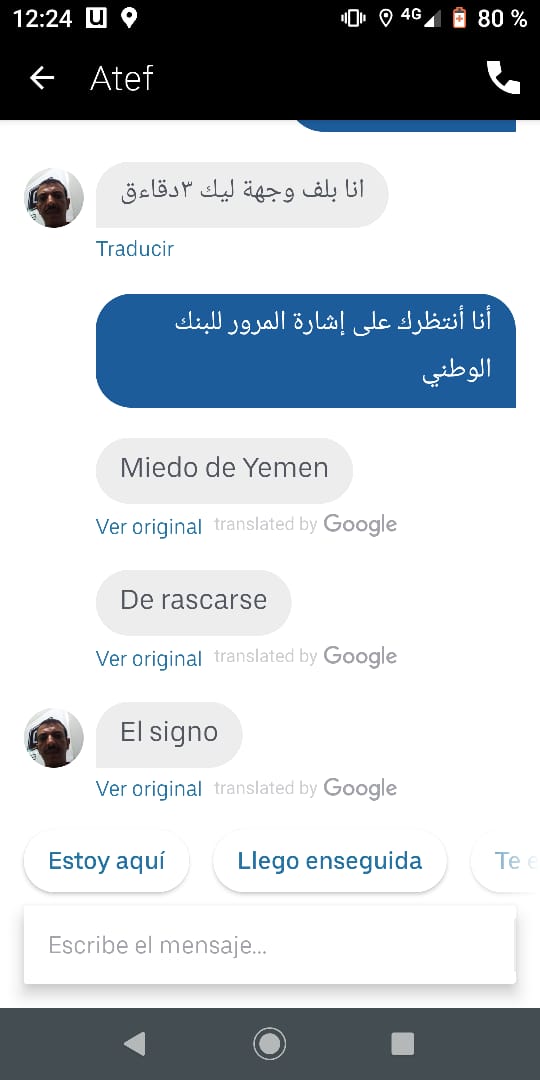
Buses
Another option is the city's scheduled buses. Google usually shows you the routes they take. But the only time we tried to take one to the Pyramids, they tried to charge us a ridiculous fare because we were tourists (we dismissed it).
Lastly, and least recommended, are the minibuses that stop anywhere. They're cheap, but given the way they travel, and not knowing where they're going, we didn't even consider them :D.

If you want more information on how to get around the country and other useful information, I recommend checking out the guide to traveling through Egypt, ideal for planning your adventure.

What is the city of Cairo like?
With the dawn, the desolate downtown scene we encountered at night transformed into pure energy. Everything was movement, noise, people. Chaos. It only took a few meters to feel the bombardment of the senses: honking horns, conversations and arguments on every corner, pleasant smells and others not so pleasant, garbage strewn in the streets and sidewalks. In just a few minutes, Cairo made it clear to us what daily life in the Egyptian capital is like.
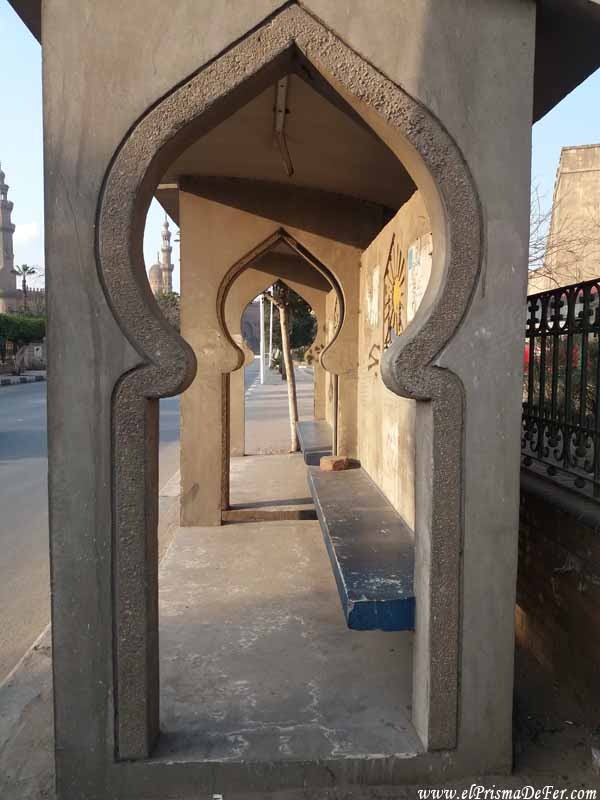
State of the city
During the days we were there, the overall impression was of a very deteriorated place in terms of infrastructure. Most of the buildings look old and neglected, some seem abandoned and half-built, even though people live inside them.
Rubble and trash pile up on every block, and the scene repeats itself over and over again, with people throwing more waste on top of what's already there. It gave me the feeling of a city abandoned to its fate, as if each inhabitant had to fend for themselves.
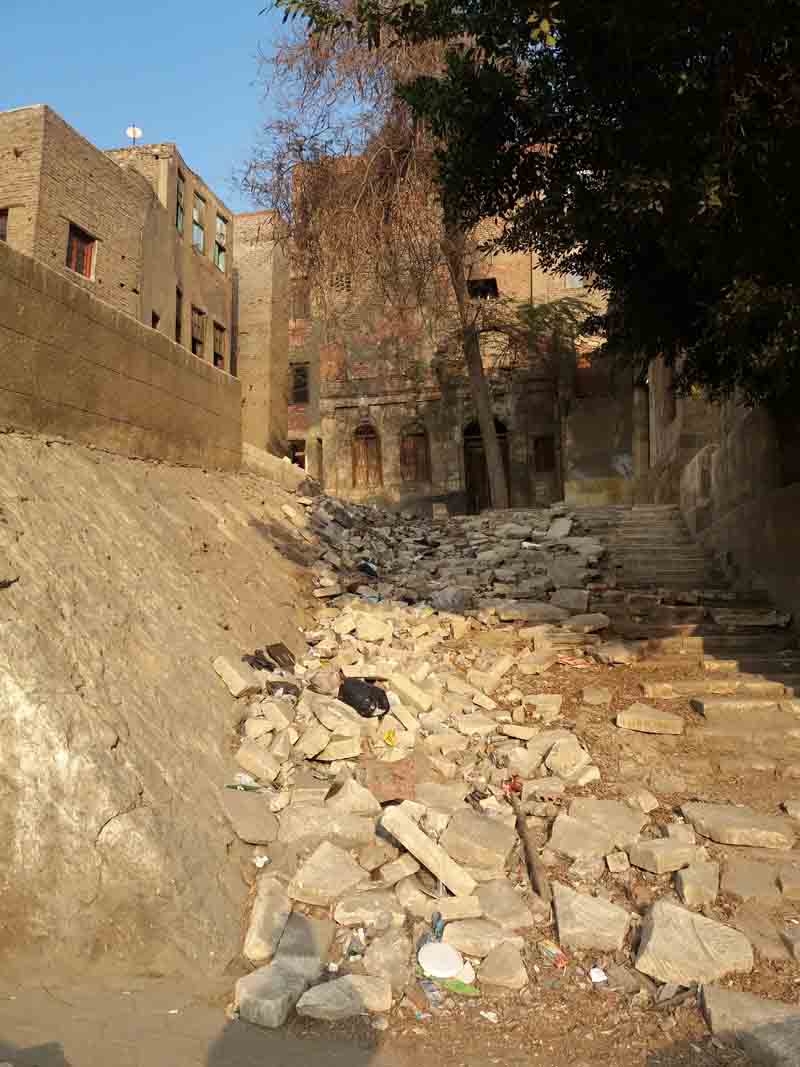
Traffic, except on the highways, is truly chaotic. There are no clear rules or right-of-way: everyone drives quickly, agitated, trying to gain space even when there isn't any. Pedestrians walk between cars and cross wherever they want. It's the law of the jungle, a true every man for himself.
This chaos also exists in other parts of the world, but with a different flavor. For example, in Southeast Asian countries like Thailand or Vietnam, it's common to cross amidst a sea of motorcycles without traffic lights, but there, everything flows calmly within the chaos.
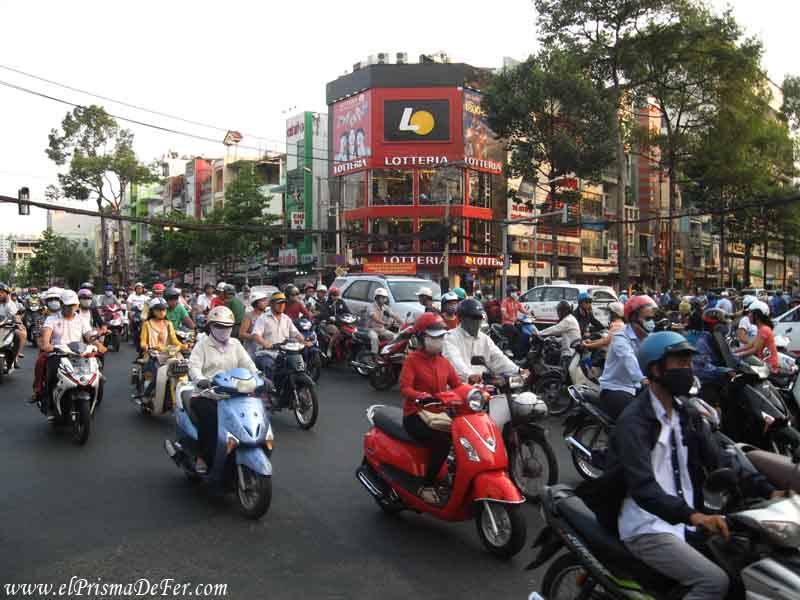
In Cairo, however, we witnessed several minor collisions and accidents between cars and pedestrians in a short period of time. So my "order within chaos" theory ended up falling short here 😅.
Cairo compared to other chaotic cities
Traveling to major world capitals often involves facing chaos, but it's not always the same, nor is it always experienced in the same way.
In New Delhi, for example, disorder coexists with a cultural and religious intensity that fills the streets with temples, processions, and markets packed with people. The noise and pollution are extreme, but at the same time there are wide avenues, green spaces, a modern subway, and a certain structure that holds it all together.
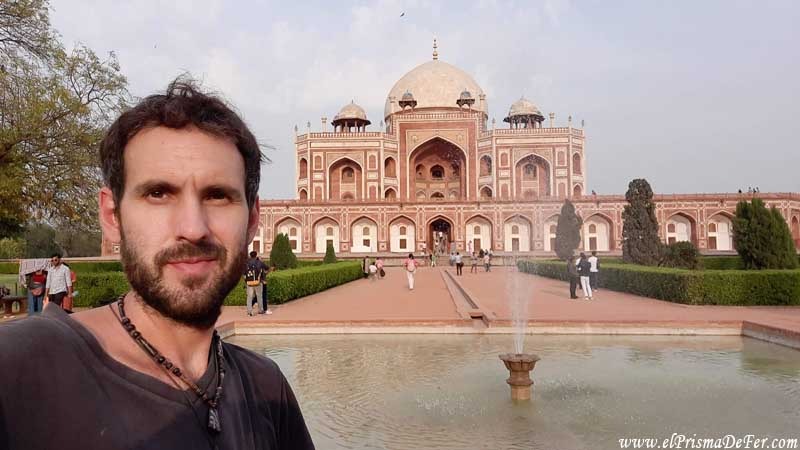
What to do in New Delhi, the capital of India (coming soon)
In Kathmandu, the chaos is felt to a lesser extent: narrow streets filled with motorcycles, dust in the air, and half-finished buildings. However, the vibe is different; more relaxed, with that spiritual undertone typical of Nepal that balances the disorganization.
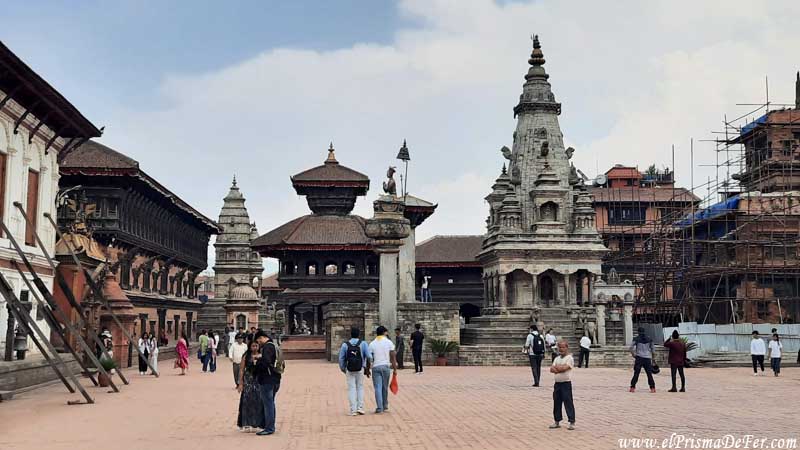
Things to do in Kathmandu, the capital of Nepal (coming soon)
Bangkok, on the other hand, is chaotic but organized in its own way. Its night markets, endless traffic, and tuk-tuks weaving through cars can be overwhelming, but the city has a much more modern infrastructure: subways, elevated trains, and services that make the chaos flow with a certain harmony.
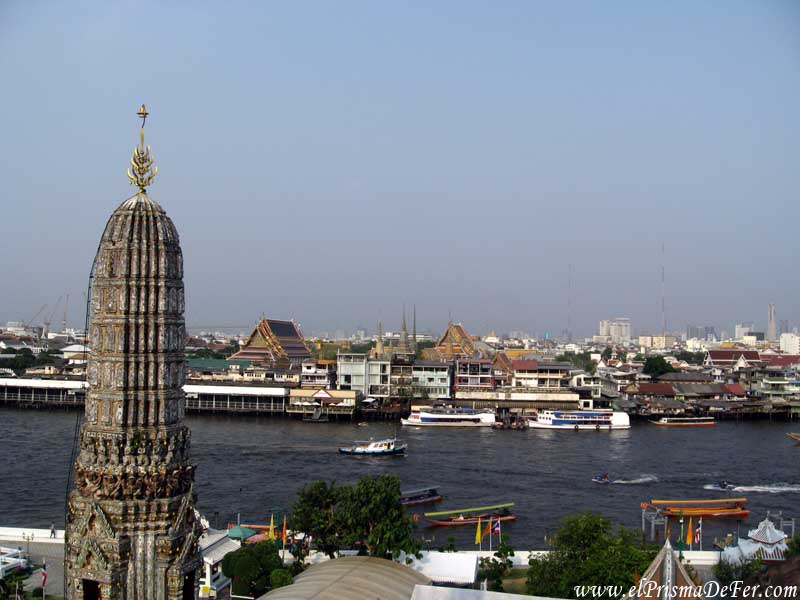
Bangkok, gateway to Southeast Asia (coming soon)
Cairo, in comparison, seemed more raw and worn to me. It's more intense, chaotic, and at times, hostile. Yet it's precisely that character that makes it so authentic: a place where life is lived without makeup and that leaves no traveler indifferent.

Map with the main attractions to see in Cairo
What to do in Cairo
Más allá de mis percepciones sobre el estado decadente de la ciudad, hay sitios verdaderamente increíbles para ver y conocer.
Walking Tour
A free walking tour in Cairo is the best way to start getting to know the city. While it's not free, as it works based on tips, it helps you get your bearings quickly, you learn history and anecdotes from a local guide and, in the process, you can meet other travelers. You can book your free walking tour here.
Visit the Citadel of Saladin
The Citadel of Saladin is one of Cairo's main historical attractions and a must-see for any visitor. This imposing fortress is located on Mokattam Hill, giving it spectacular panoramic views of the city and the bustle of the historic center.
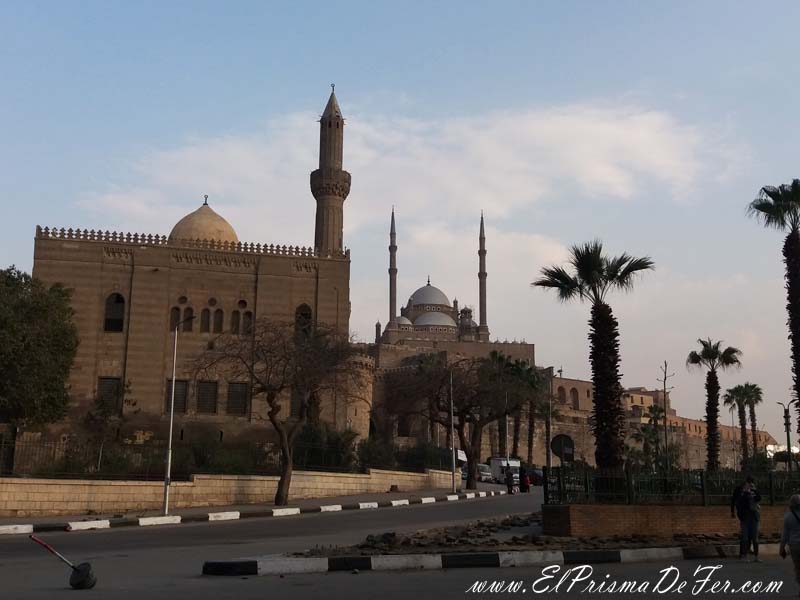
The Saladin Citadel was built in the 12th century by the Kurdish sultan Salah ad-Din as a defensive fortress to protect Cairo from invasions, especially by the Crusaders. Over the centuries, the citadel was expanded and became the residence of sultans and the center of political and military power in Egypt.
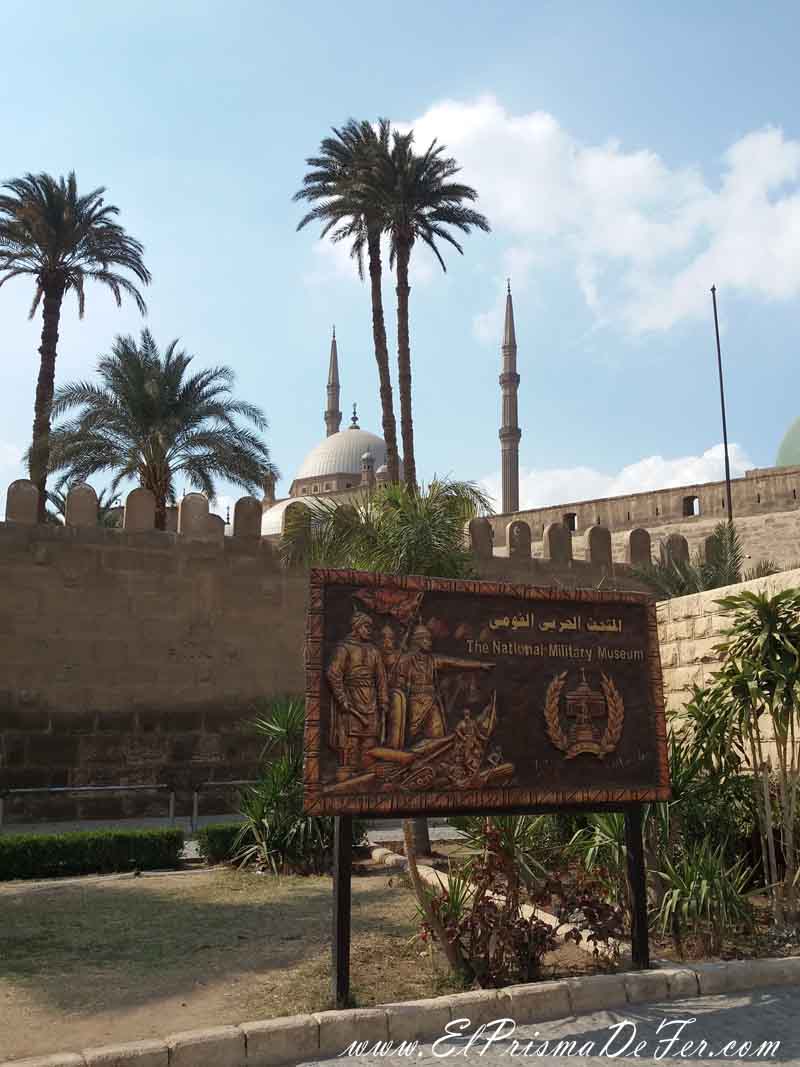
Its strategic location on a hill allowed it to control the entire city and the Nile, as well as serving as a refuge in times of conflict.
Inside the citadel
Today, within its walls are some of the city's most famous mosques, such as the Muhammad Ali Mosque, known for its enormous domes and imposing marble interior. There is also the Mamluk-style Al-Nasir Muhammad Mosque, and several museums that offer an insight into Egypt's military and cultural history.
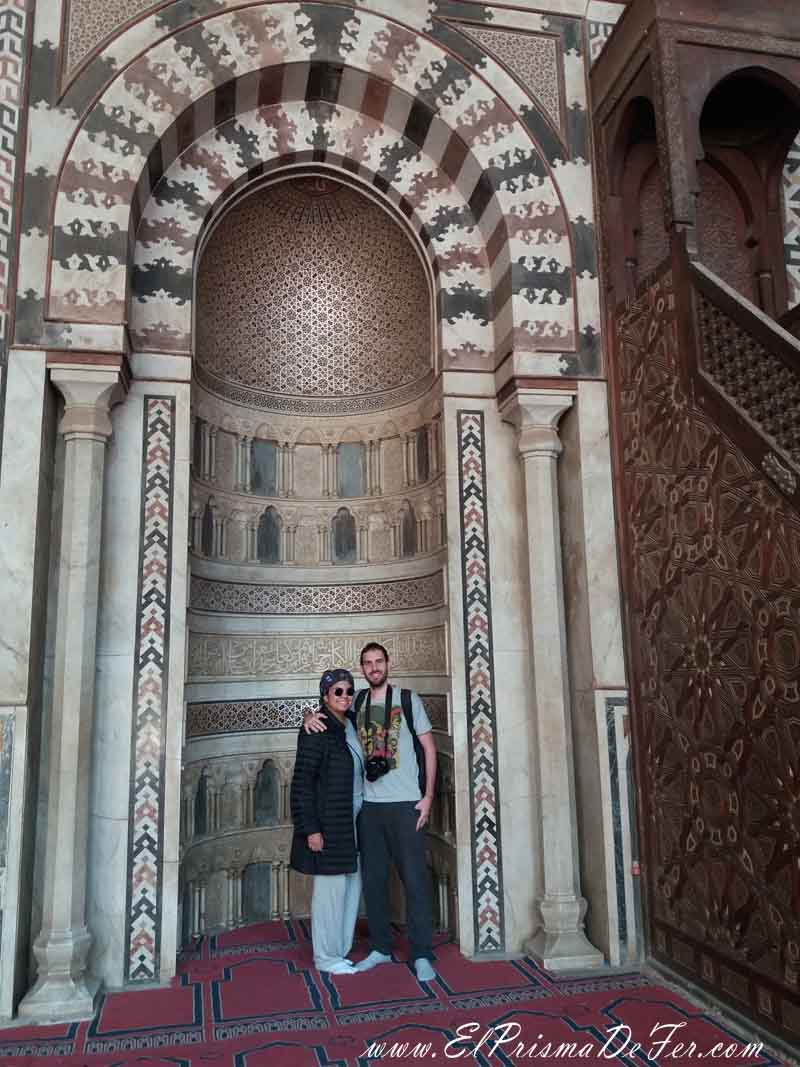
Touring the Citadel is an experience that blends history with unique views. Its walls, towers, and bastions offer a glimpse into how the city was defended in the Middle Ages, while the mosques and museums showcase the artistic and cultural wealth accumulated over the centuries.

Plus, the site isn't usually as crowded with tourists as other downtown spots, allowing you to enjoy the architectural details more peacefully.
Inside the Citadel, there is also a terrace from which you can enjoy one of the best panoramic views of Cairo. From there, you can see other mosques in the city, the ancient roofs, and, if the weather is good, you can even make out the silhouettes of the Pyramids of Giza in the distance, creating a striking contrast between Islamic history and that of Ancient Egypt.
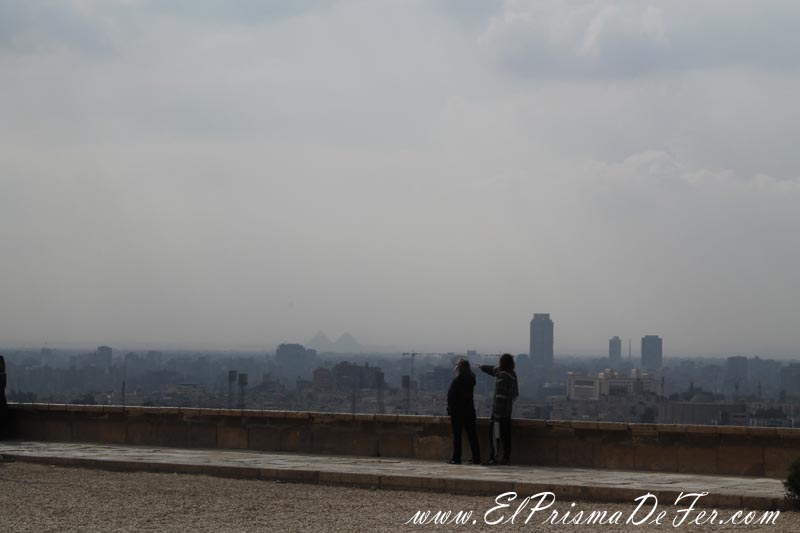
Admission to the Saladin Citadel in 2025 costs 550 Egyptian pounds (275 with student discount). However, I recommend always checking the official website for updated opening hours and prices.
How to get to the Citadel of Saladin
To get to the Saladin Citadel from downtown, the most practical way is to take an Uber or taxi. We prefer to use Uber in Cairo (which is very good) to avoid haggling endlessly with taxi drivers for every place we wanted to go.
The citadel can also be reached on foot, but it is a fairly long distance from the city center.
Alabaster Mosque or Mohammed Ali
The Mosque is located at the top of the Saladin Citadel. It was the largest mosque built in the first half of the 19th century, between 1830 and 1848, and is also the most visible in the Egyptian capital due to its elevated location and the height of its minarets.
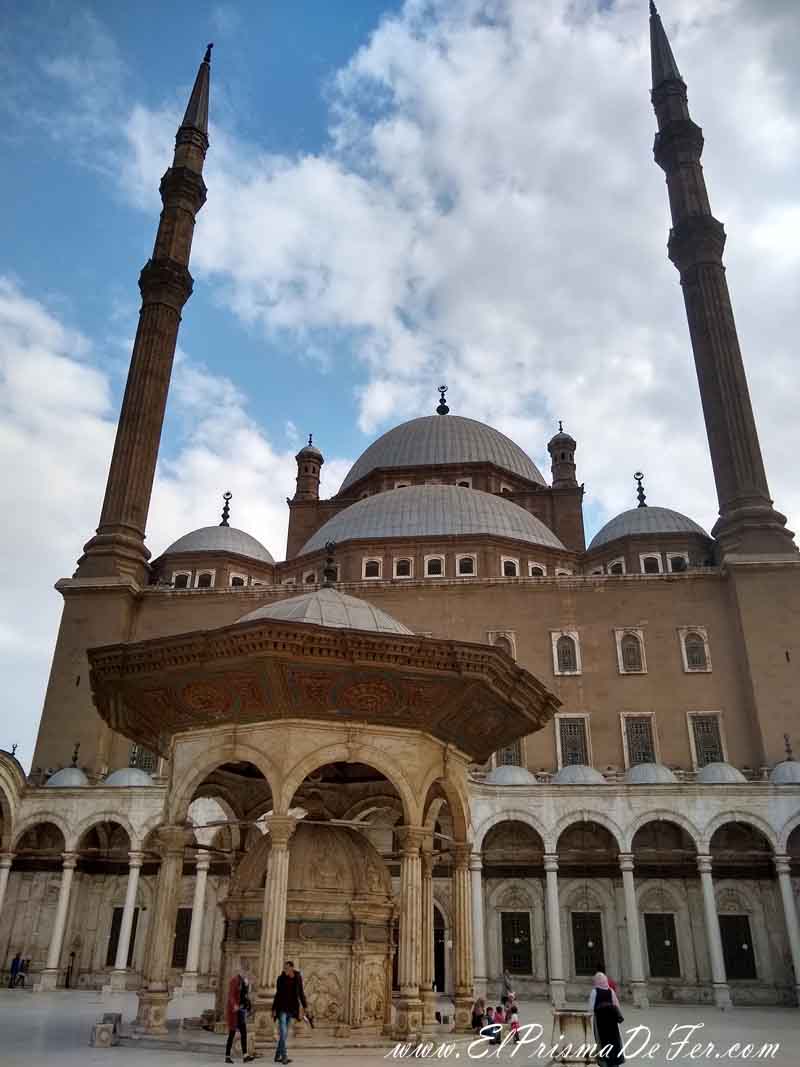
Its location on the Citadel Hill gives it an imposing air, its enormous domes and the light brown tone of the alabaster, similar to marble, make the combination simply unique.
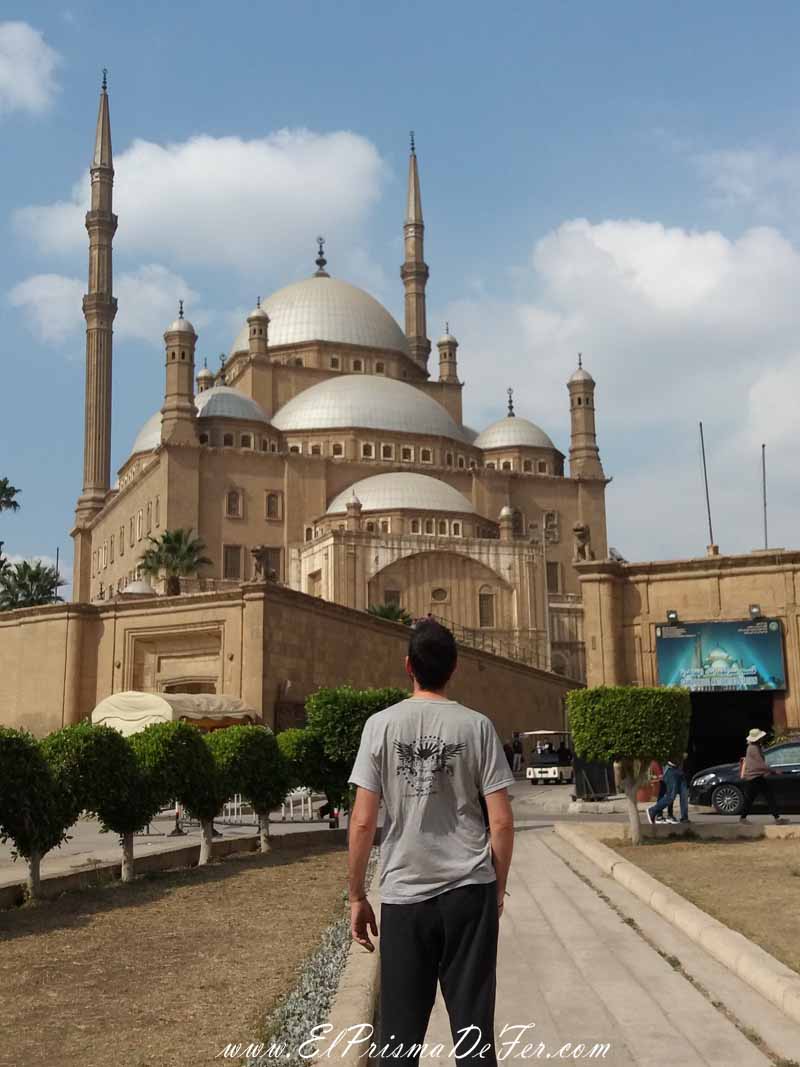
Visiting it means enjoying an icon of Islamic art in all its splendor, with spectacular views of Cairo all around.
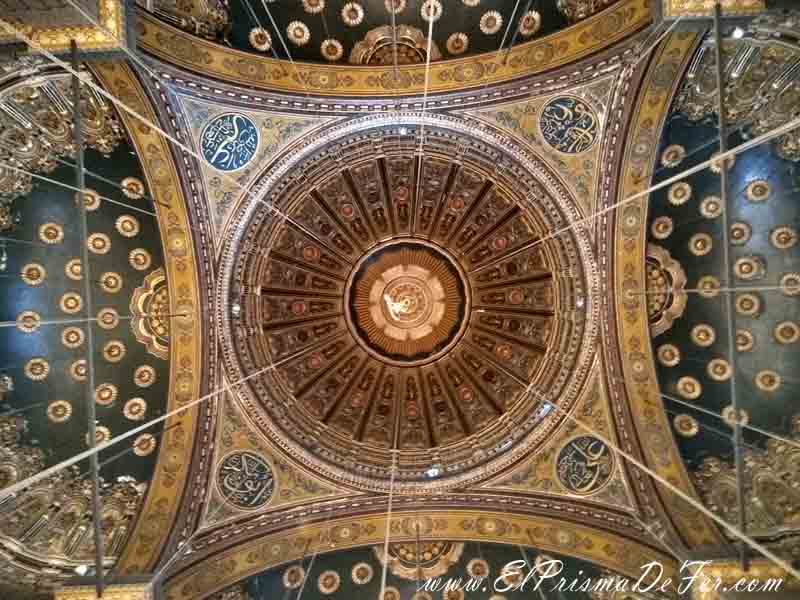
After having visited many mosques over the years, such as the imposing White Mosque in Abu Dhabi, the Blue Mosque in Istanbul or the picturesque mosques of Samarkand in Uzbekistan, I still consider the Muhammad Ali Mosque to be one of the most impressive I have seen.
Sultan Hassan Mosque
The Sultan Hassan Mosque is considered one of the architectural masterpieces of the Mamluk period, a time of great artistic splendor in Egypt. Its monumentality and elegance make it an essential icon for visitors to Cairo.
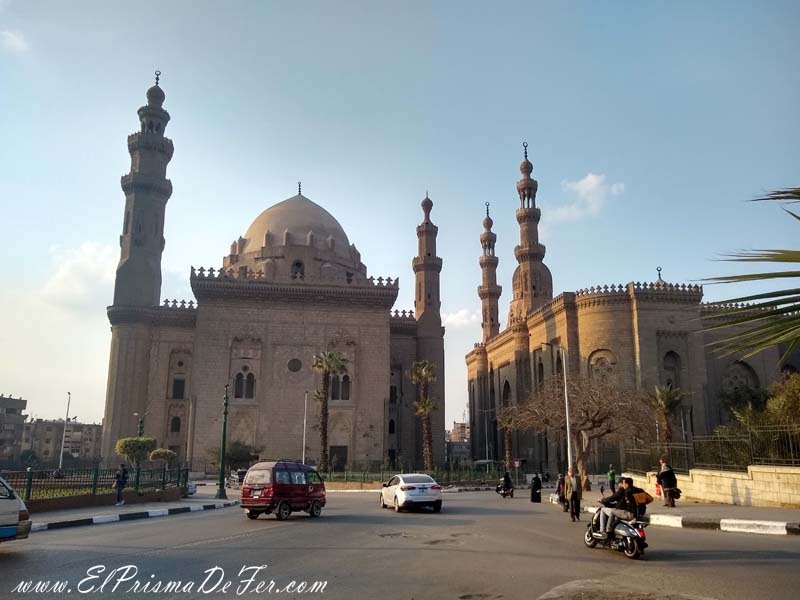
Unfortunately, we didn't make it in time to enter, as it closes between 4 and 5 p.m., but we were still able to admire it from the outside. Its imposing façade and harmonious proportions allow you to appreciate its grandeur even without entering.
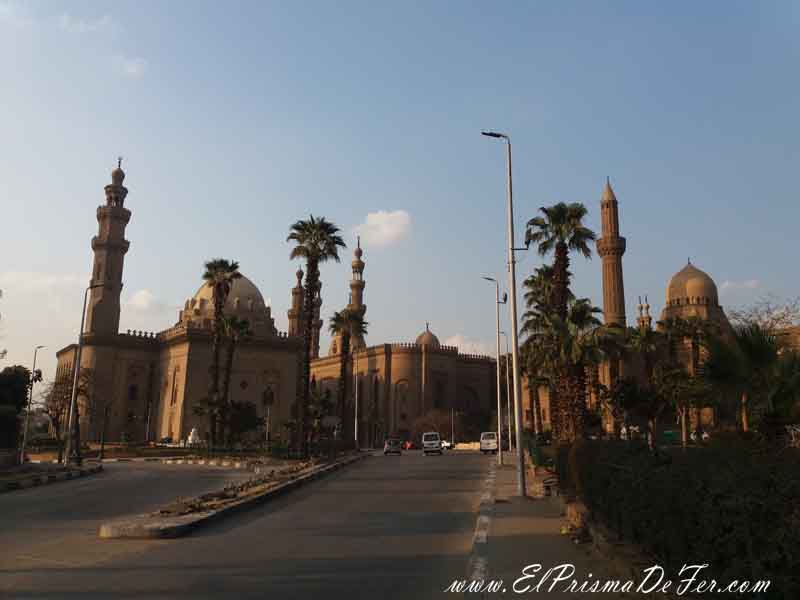
The mosque is located very close to the Citadel of Saladin; in fact, it's visible from the fortress's terrace. It's easily accessible with a 15- to 20-minute walk, making it an ideal addition to a visit to the Citadel.
Touring Islamic Cairo
Islamic Cairo is the historic area where much of the architecture and monuments from Egypt's medieval period are concentrated. Narrow streets, traditional markets, and mosques of enormous historical value make walking here feel like traveling back in time.
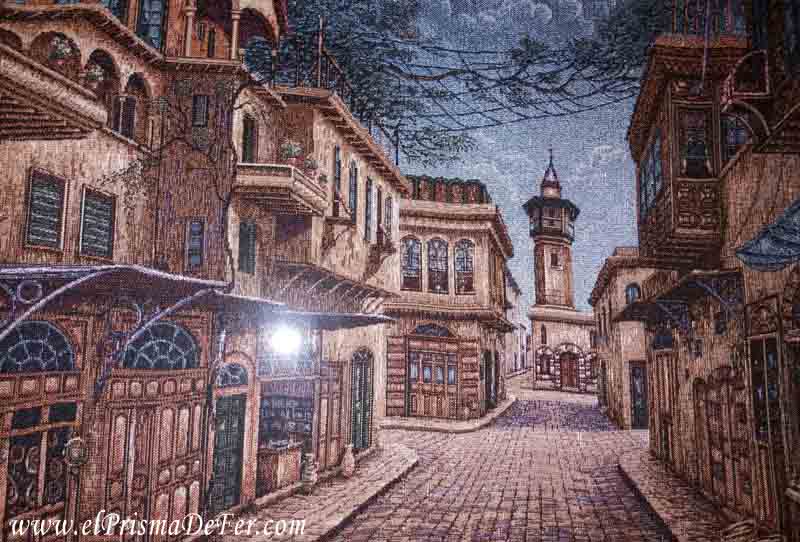
Among the must-sees are the Ibn Tulun Mosque, one of the oldest in the city, famous for its gigantic courtyard and unique helical minaret; and the Sarghatmish Madrasa, an example of Mamluk ornamentation with stone and wood details.
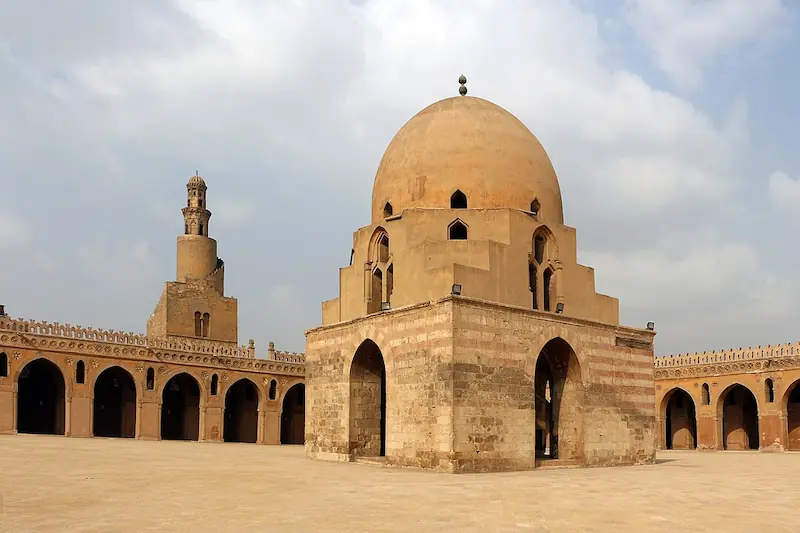
Also notable are the aforementioned Sultan Hassan Mosque and the Al-Azhar Mosque, not only religious but also educational centers, where generations of Islamic scholars were trained.
Walking through this area also allows you to discover bazaars, cobblestone streets and small squares, where you can experience local life away from the hustle and bustle of downtown tourism.
That's why it's recommended to spend at least half a day or a full day exploring it, taking time to stop at each monument and enjoy the unique atmosphere that characterizes Islamic Cairo.
Walking through the Khan El-Khalili Market
Another must-see in Cairo is walking through the streets of the Khan El Khalili Bazaar. It consists of several pedestrian blocks filled with stalls selling everything from ornaments and travel souvenirs, papyrus, carpets, clothing, jewelry... practically everything you can imagine buying in Egypt is there.
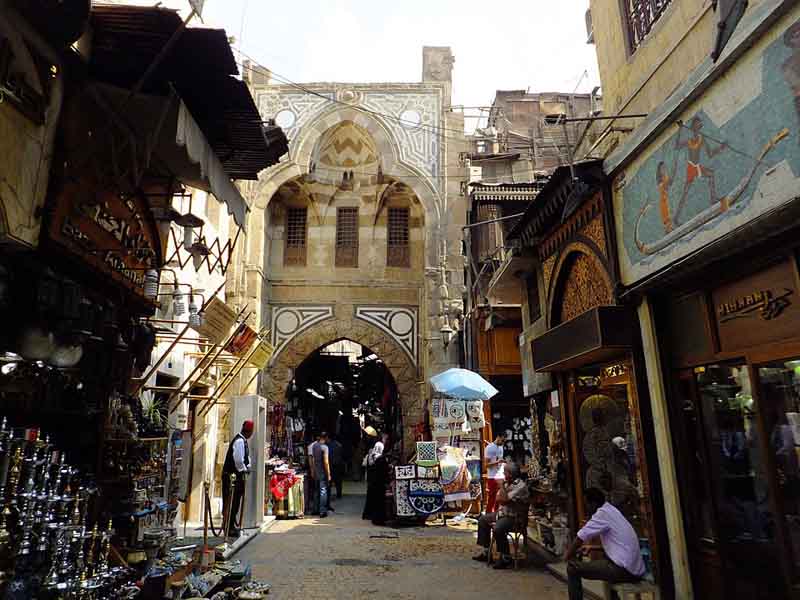
The bazaar is a world of people, noise, and constant shouting, where the range of products is enormous. Here, bargaining is not optional: what costs 100 pounds at one stall may cost 80 pounds at another, and that's before the actual bargaining game has even begun.
It's easy to feel overwhelmed, and at times it can be exhausting to have to negotiate everything. The best thing is to take it as a game, enjoy the dynamics and learn to move with patience.
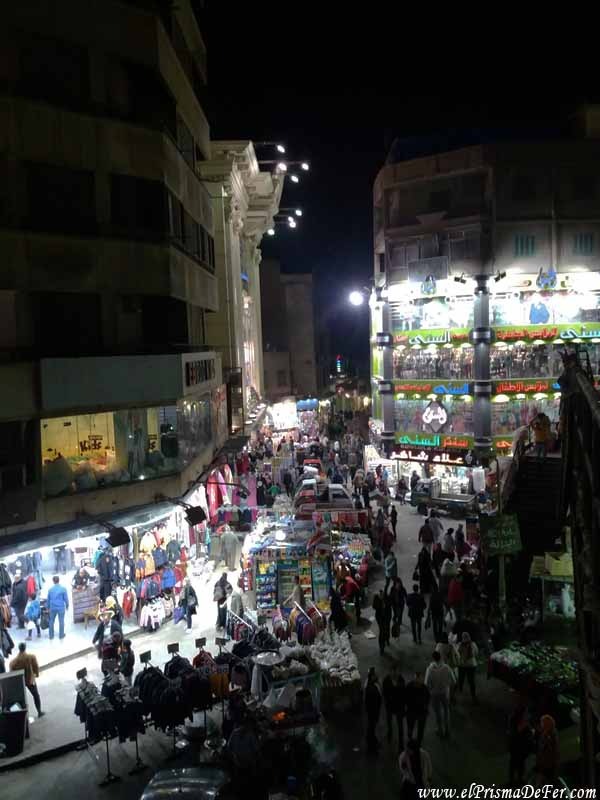
Vendors employ various strategies to convince you to buy from them, some even somewhat aggressive. It happened to us in Luxor: after negotiating for a few minutes and wanting to leave, a vendor stood in our face, yelling at us and even spit on us while talking. 😅 An extreme moment, but one that reflects part of the intense experience of the bazaar.
I ended up shopping at stalls where we were allowed to browse and choose at leisure before haggling. We acquired magnets, ornaments, and a beautiful scroll, enjoying the experience without stress or feeling unduly pressured.
Visit the Coptic Quarter
The Coptic Quarter is in the old part of the city, crisscrossed by narrow streets, and where you can find many churches such as The Church of Saint Mary, The Church of Saint Sergius, The Chapel of Saint Barbara or The Hanging Church, so called because you have to climb some stairs to enter.
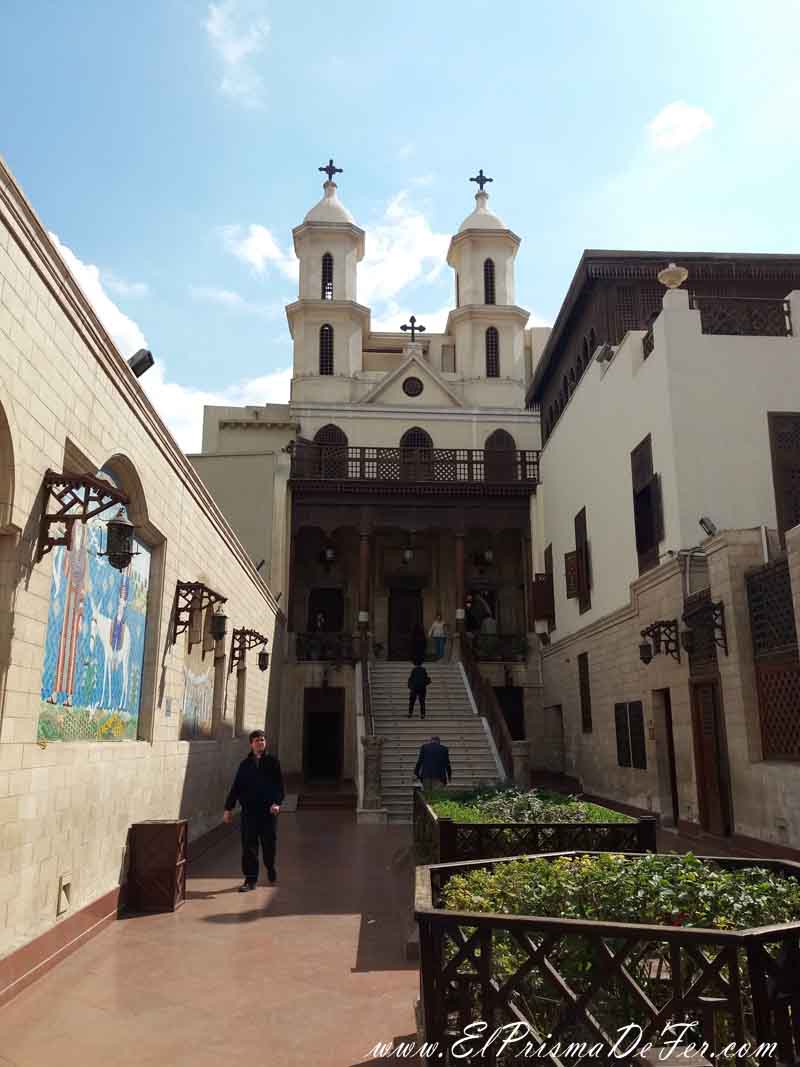
The term Coptic refers to Egyptians who profess some type of Christian faith, whether in the Orthodox Church, the Catholic Church or the Evangelical Church.
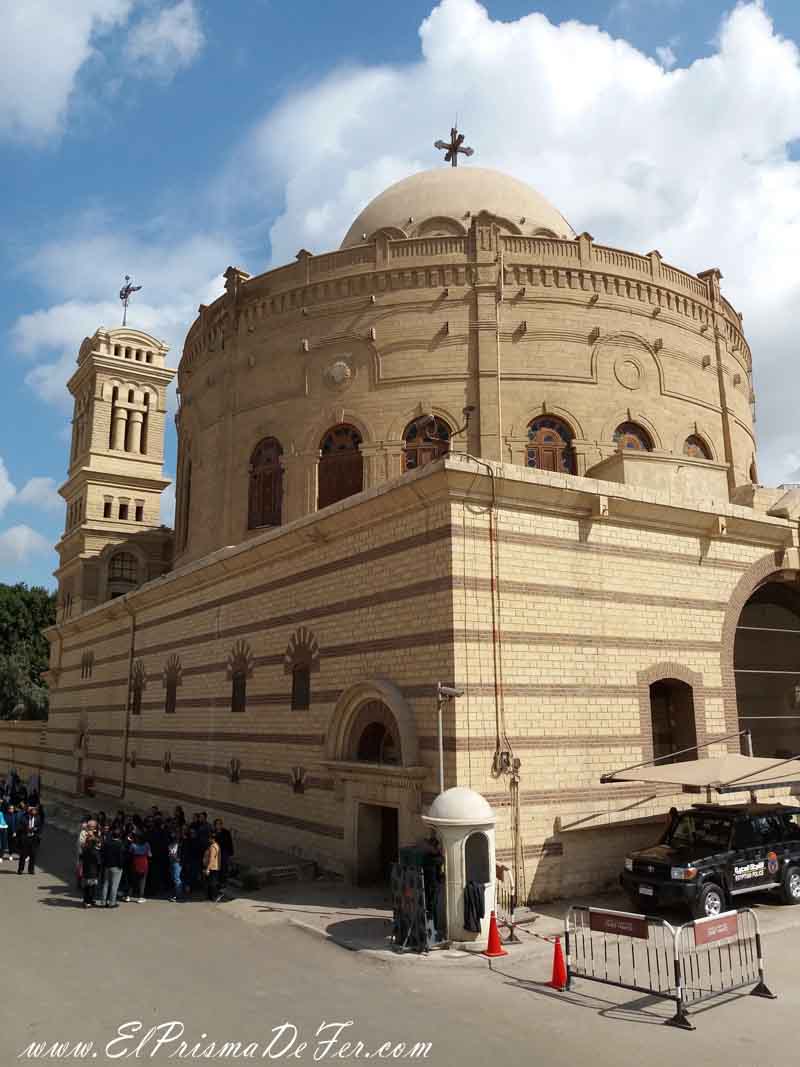
In addition, within the neighborhood is the Coptic Museum, which houses 4th-century manuscripts written in Coptic, as well as other archaeological pieces that show the life and culture of ancient peoples.

It is an ideal place for those who want to delve deeper into Cairo's Christian history and cultural heritage beyond its Islamic monuments.
Admission to the Coptic Quarter is free, but the Coptic Museum requires a fee. Its price as of 2025 is approximately 3 euros (1.5 euros with a student discount).
How to get to the Coptic Quarter
From downtown, reaching the Coptic Quarter is very easy by metro. Just take the line that stops at Sadat Station, in Tahrir Square, and get off at Mar Girgis Station, right in front of the entrance to the neighborhood.
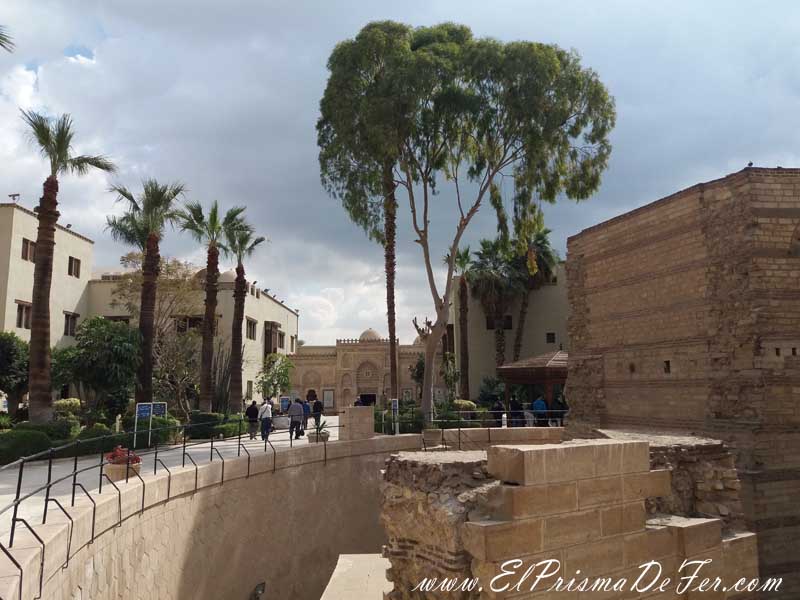
Cairo Museum
The Egyptian Museum in Cairo has so many pieces to display that the space seems constantly too small. Many rooms are somewhat crowded, dust accumulates in certain corners and there are always people moving around, but this almost chaotic atmosphere gives it a unique charm, as if each object had its own story waiting to be discovered. What's more, there are hundreds of pieces still stored in storage, waiting to one day be revealed.
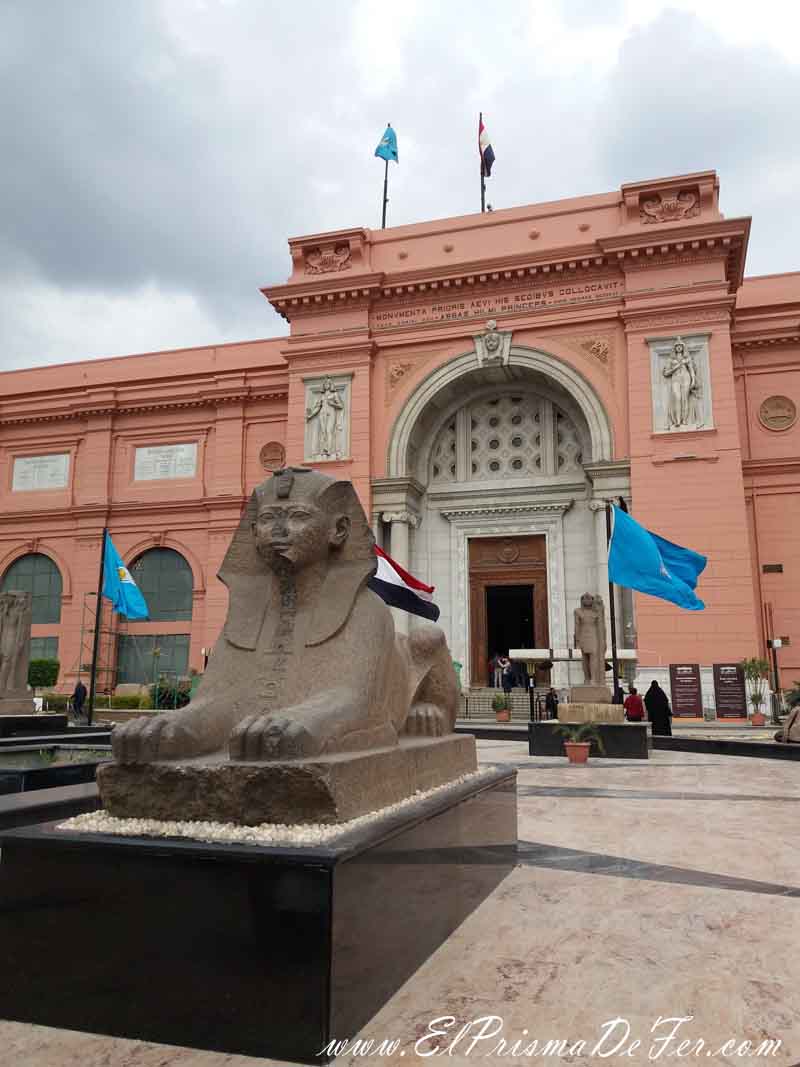
The museum is organized by the different periods of ancient Egypt. On the ground floor is a collection of papyri from the last two millennia. There are also objects from the Old, Middle, and New Kingdoms, including statues, paintings, and sarcophagi. These include objects found in the tombs of several pharaohs, as well as many others found in the Valley of the Kings.
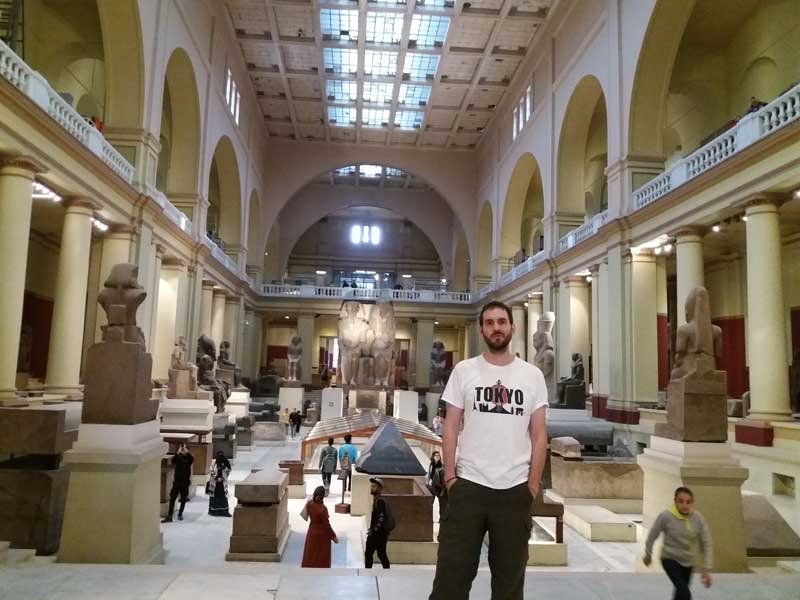
In it piso superior se encuentra el famoso Tutankhamun's treasure, incluida su icónica máscara de oro. Además la exposición sigue un orden cronológico, mostrando objetos de las últimas dinastías, como las dinastías XXI y XXII de Tanis, donde se encuentra la máscara de oro del faraón Psusennes I.


The collection concludes with pieces from the Roman period, including a mosaic with the head of Medusa, which reflects the influence of external cultures on Egypt.
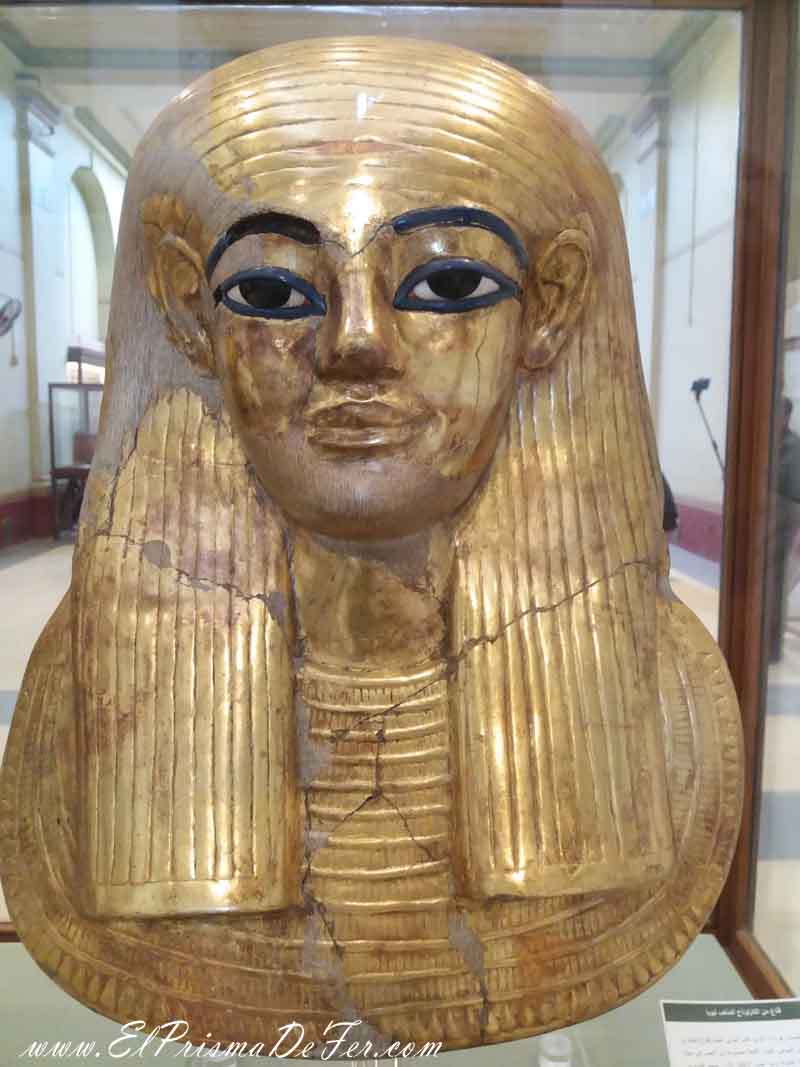
Mummy Room
The Mummy Room deserves special mention. The degree of preservation of the pharaohs' bodies is impressive. Seeing Ramesses II lying prostrate before me was simply astonishing: this small body of a pharaoh, who more than 3,000 years ago was one of the most powerful in Egyptian history and architect of great wonders, was now there, exposed and protected only by glass.
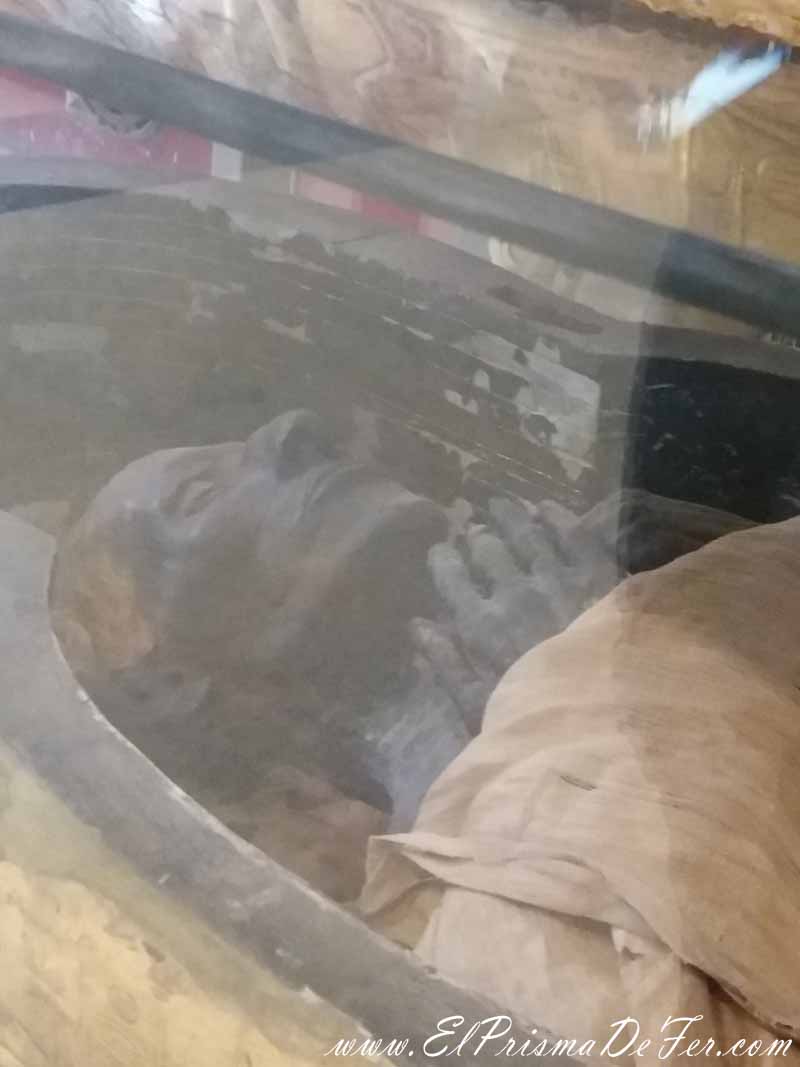
The experience is unforgettable and tangibly conveys the magnitude of Egypt's history. (Photos are not permitted inside the gallery.)
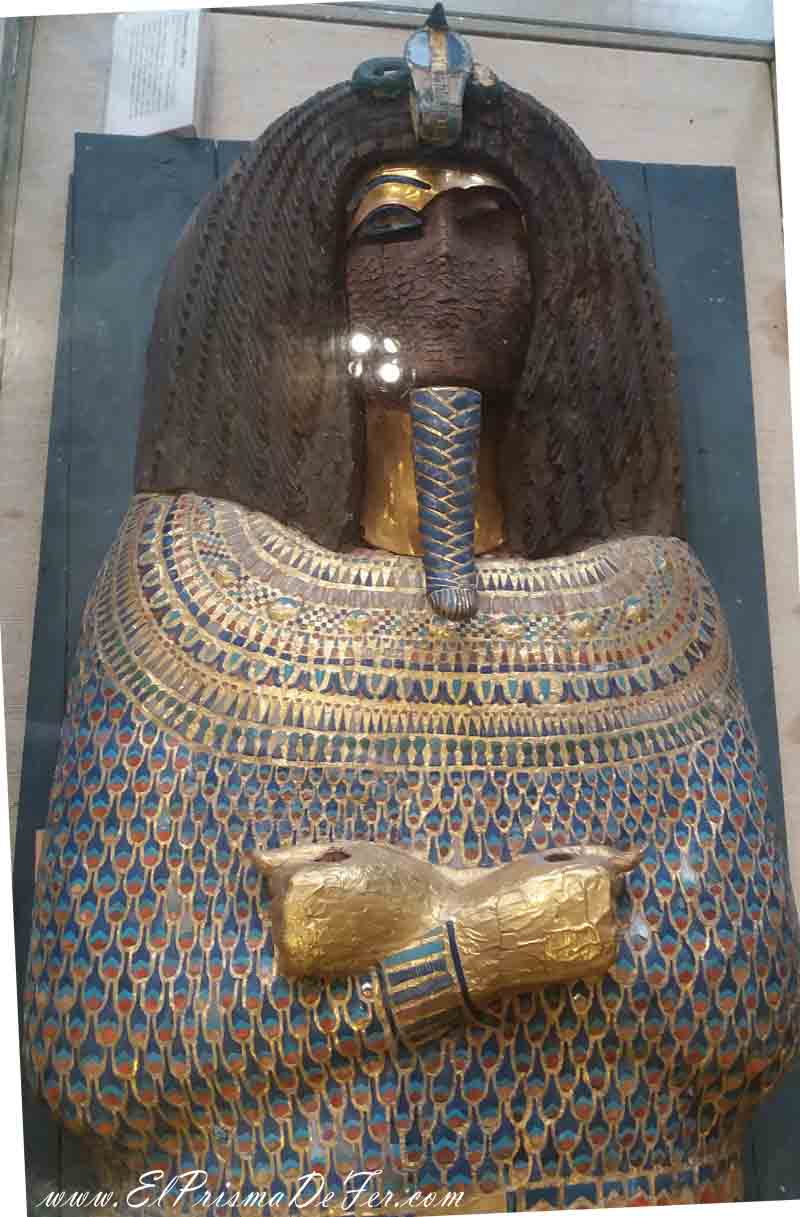
How to get to the Egyptian Museum in Cairo
If we're downtown, near Tahrir Square, we only have to walk a few blocks to get there. Very easy.
Price to enter the Egyptian Museum
Ticket prices for 2025 were EGP 550. However, it's a good idea to check the official website for updated times and prices.
Grand Egyptian Museum
The Grand Egyptian Museum is one of the most anticipated openings in the world of archaeology and culture. Located just 2 km from the Pyramids of Giza, this museum promises to be the largest in the world dedicated to a single civilization. Its official opening is scheduled for November 1, 2025, after years of planning and construction.
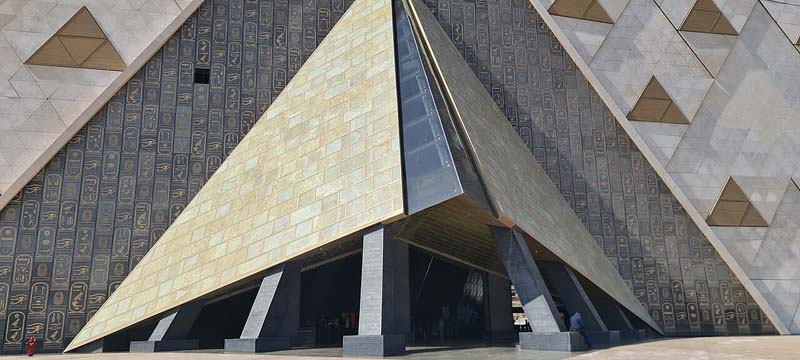
The new museum will house more than 100,000 artifacts, including the complete Tutankhamun collection, which comprises more than 5,000 objects, many of which have never been displayed before.
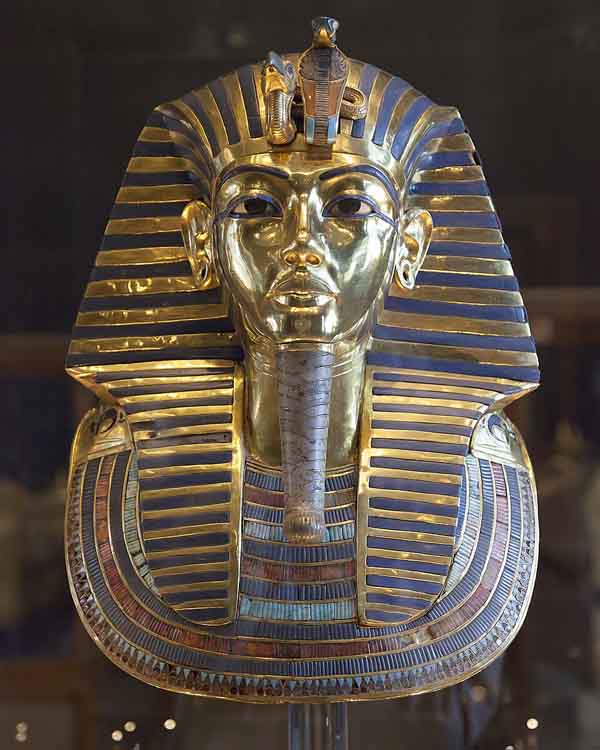
For more details and updates, you can visit the museum's official website.
Visit the Pyramids of Giza, the only remaining wonder of the ancient world
Of course, no visit to Cairo would be complete without seeing the Pyramids of Giza. Their grandeur and mystery make them an absolute icon of Egypt and the ancient world. In this post, I only wanted to mention them, but if you're interested in knowing how I visited them on my own, without organized tours, in another article I'll tell you all the details: transportation, schedules, prices, and practical tips for exploring them at your own pace.
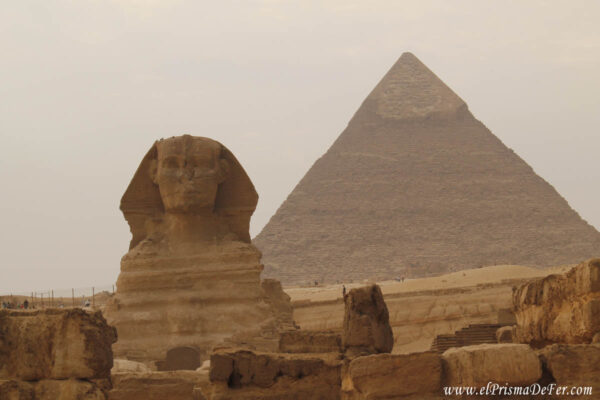
In this article I wrote about the visit we made to the Pyramids of Giza on our ownThey detail how we managed to get there without booking a tour, and all the challenges we had to overcome to get there.
Organized activities in Cairo
Disclaimer: The following tours contain affiliate links. This means that if you book through them, I'll receive a small commission at no extra cost to you. It's a way to support my work and help me keep this space alive, filled with stories and travel advice. Thanks for joining me on the journey ;)!

Where to stay in Cairo
Our accommodation was the Cairo Plaza Hotel, located in the heart of downtown, in other words, in the city center. The building it's located in doesn't make the best first impression: the three floors before the hotel are dirty, neglected, and, to top it all off, there's no elevator. But as soon as we walk through the reception door, everything changes radically. The hotel is clean, with good facilities, a full breakfast, and quite affordable prices. A recommended option for travelers who prioritize value for money.
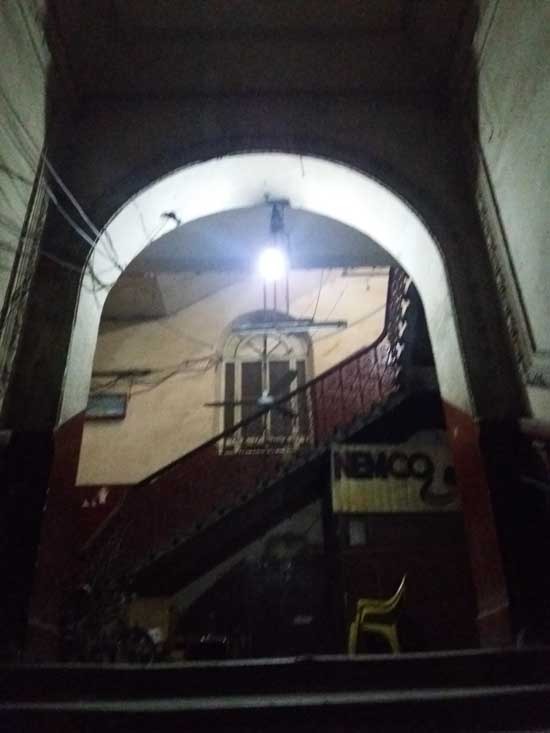
Downtown itself is a chaotic area, with old buildings, somewhat neglected streets, and a lot of noise during the day (although, let's be honest, what part of Cairo isn't?). However, it is very practical: from there you can walk to the Egyptian Museum, the Khan El Khalili Bazaar and the metro is also close by to get to other parts of the city.
Of course, Cairo offers options for all tastes and budgets. Those looking for something more modern and with high-end amenities can opt for a stay on Gezira Island, in the middle of the Nile, where more exclusive, though also considerably more expensive, hotels abound.
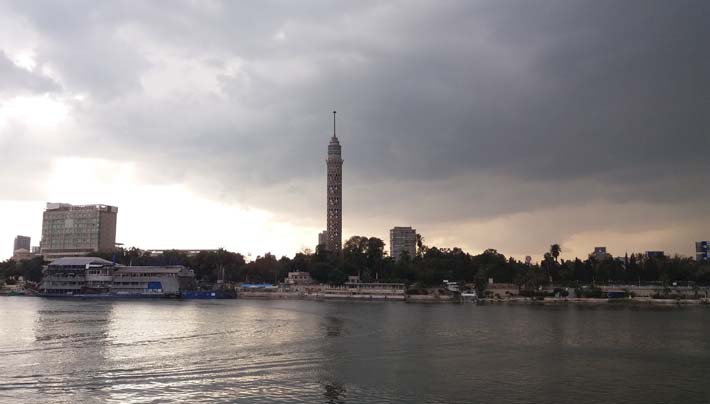
Security in Cairo
One of the first questions that arose when we decided to travel to Cairo was about security. Is it safe to walk the streets? Are there frequent attacks?
In my experience, the city seemed safe for travelers. At no point did I feel like anything bad could happen (except for a specific situation on the way to the Pyramids that I will describe in another article). For those of us who come from Latin America, where living with insecurity is part of everyday life, it's inevitable to compare. However, in the areas we visited in Cairo, I never had that feeling of constant alert.
Of course, caution is never a bad idea. If your instinct tells you not to enter a street, it's best not to. As in other Muslim countries in the region, the penalties for theft or crime are severe, which greatly reduces this type of risk. Even so, it's always advisable to be vigilant with personal belongings and not get too confident.
Regarding attacks, while they were more common years ago, they are rare today. If something happens, it's usually linked to specific protests or demonstrations, so it's best to avoid large crowds of people.
How many days to stay in Cairo?
In my opinion, the ideal would be to dedicate at least 3 full days to Cairo, plus 1 additional day to visit the Pyramids of Giza. I would have liked to explore the city more slowly, exploring the modern part on Gezira Island, where the Cairo Tower is located, and getting lost in Islamic Cairo.
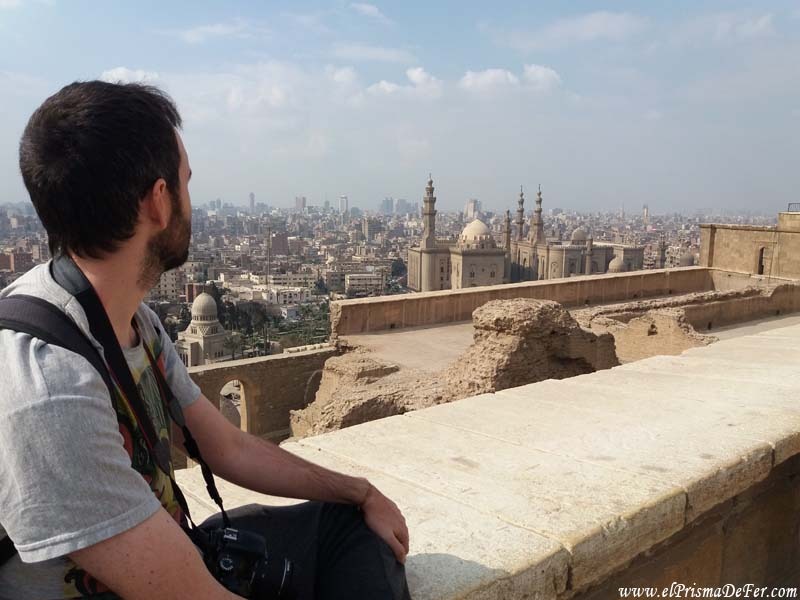
Despite all the negative things I mentioned earlier about the city's decaying state, Cairo has a magnetism all its own. Old, dirty, and chaotic as it is, it sparked a curiosity in me that I would have loved to satisfy by staying a few more days, exploring corners I'd only glimpsed and immersing myself even deeper in its history and urban life.
Best time to visit Cairo
I visited Cairo in February, and the weather was ideal for exploring the city on foot. The temperatures are pleasant, neither too hot nor too cold, allowing you to enjoy walks around downtown, historic Cairo, and the markets without suffering from the scorching summer heat.
In general, the months from November to March tend to be the most recommended to visit Egypt, as the temperatures are milder and you can walk and explore comfortably. During the summer, the heat can be intense, especially when visiting the Pyramids or outdoor areas, which can make a leisurely tour of the city difficult.
Thoughts on my visit to Cairo
My stay in Cairo was brief but intense. I was only able to stay a couple of days, enough time to walk a lot and soak up its urban life, but still making it clear that I still had a lot to discover. The city has an incredibly rich history captured in its streets, monuments, and markets, and it's evident in every corner.
At the same time, I couldn't help but notice the most neglected areas, the dirt on some streets, and the chaos that characterizes many South American capitals. However, that didn't dull my fascination with the city: old, noisy, and chaotic, Cairo awakens a curiosity that invites you to explore it calmly and attentively.
Without a doubt, one day I would like to return to give it more time and explore everything this city still has to offer.
Other articles that may interest you about Egypt
Support The Prism of Fer!
Your support helps me continue creating free content on the blog. Thank you so much!


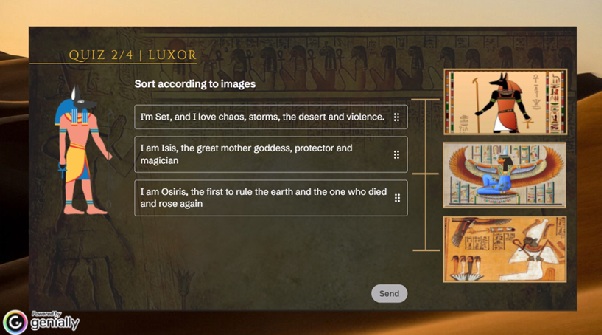
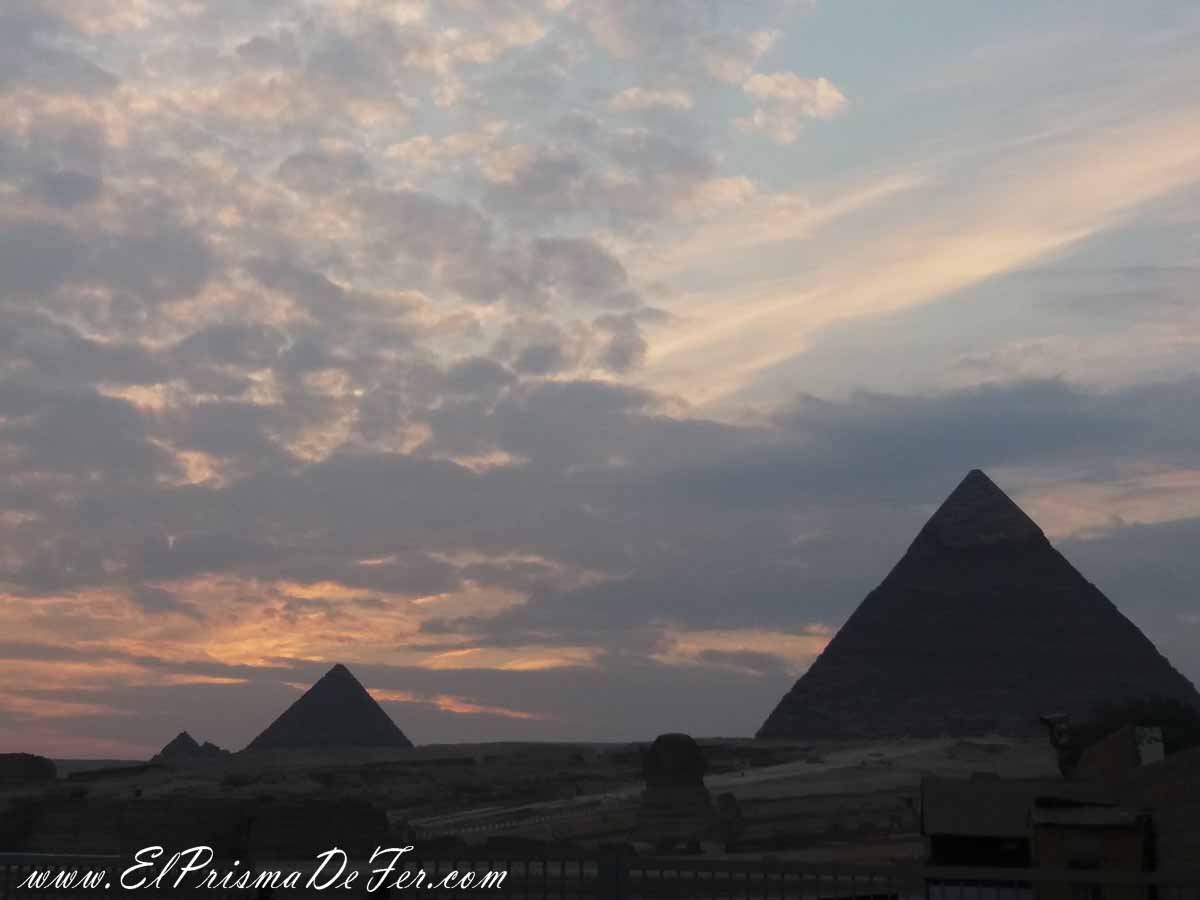
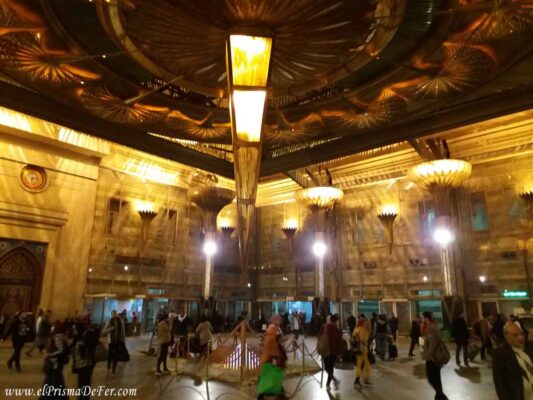
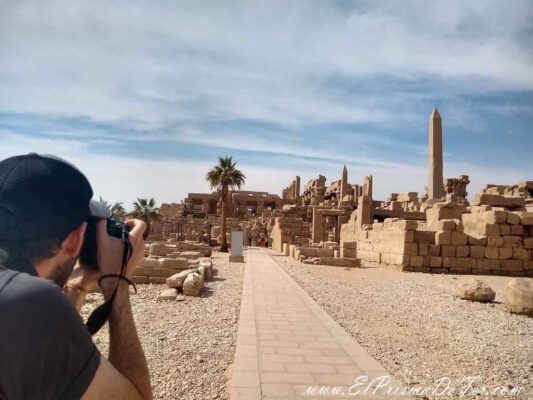
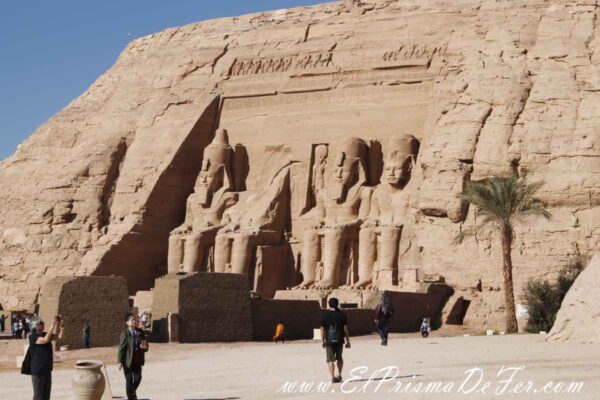
Hello Fernando, I'm Fernando Sanint from Colombia, I have carefully read your article about your trip to Egypt and I found it very interesting and enjoyable. I would like to know a little more about this wonderful trip, since I am thinking of traveling with my wife next year if Covid allows us... I see that you are missing more days in Cairo, will 5 days be enough with the visit to the pyramids and I think the new Cairo museum will be open next year... I hope so... Greetings and I await your comment.
Hello Fernando! How are you? First of all, thank you for reading my blog.
Look, as I wrote in the article, I would have liked to spend at least three full days in the city and another day exclusively for the pyramids, so at least four days. I think you'll be more than fine with five days (as long as you don't neglect other points of interest in the country).
A visit to the pyramids, if you want to enjoy them at your leisure, can take all day. I don't know how big the new museum will be, but it'll definitely take a few hours (the current museum takes between 2 and 4 hours, depending on how much time you spend).
And within the city, you have historic Cairo, Islamic Cairo, Saladin Fortress, the Coptic Quarter, "modern" Cairo, markets, etc. It also influences each person's tastes and desire to walk. For example, my partner wanted to leave right away, but I liked it there and would have liked to stay a few more days if I could.
I don't know how tight they are in days, but if they are loose then at least 4, and 5 even better to walk more relaxed.
I didn't get around to writing articles about the other places I visited, such as Luxor, Aswan, and Dahab, but if you have any questions, feel free to write to me.
Greetings and good luck!!